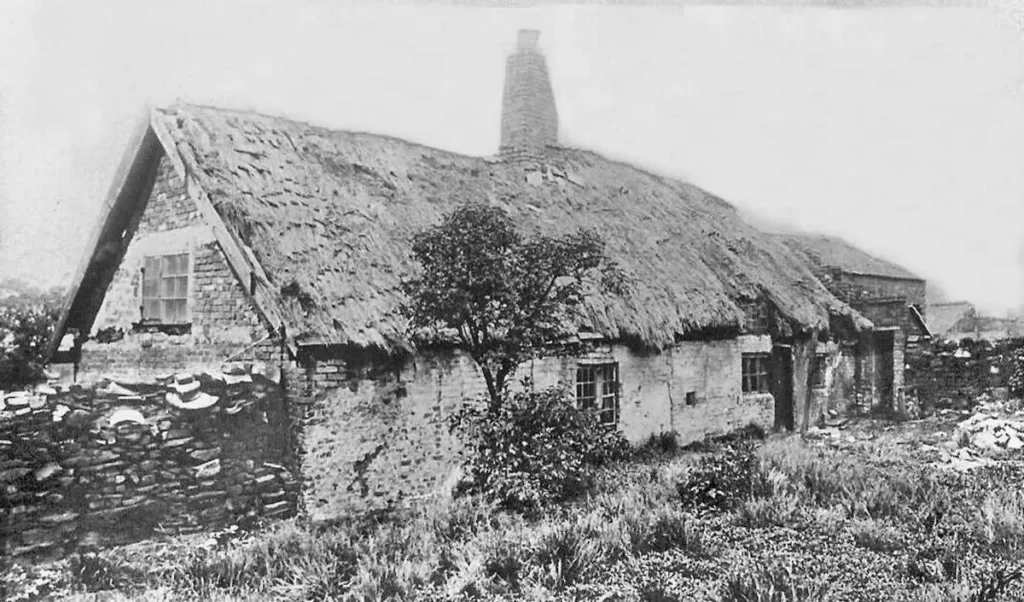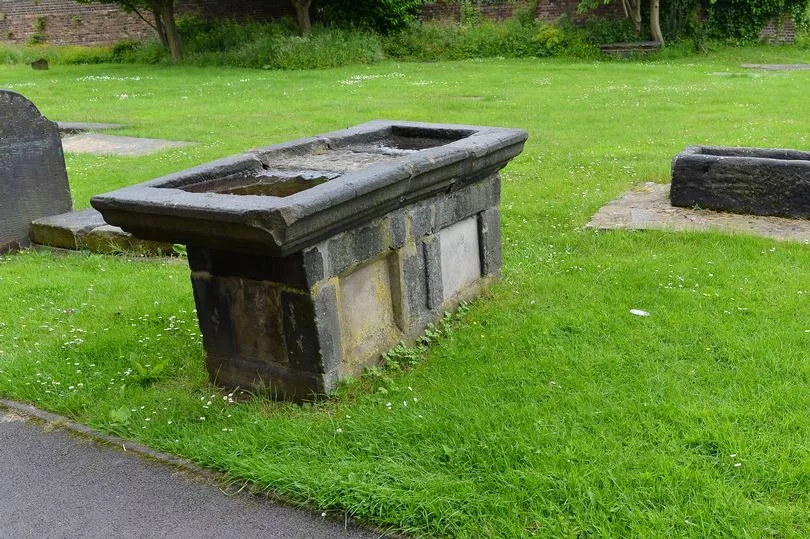Margaret “Molly” Leigh (1685 – March 1748), known as the witch of Burslem, was a relatively wealthy woman who was accused by the local rector of being a witch. No formal charges were ever laid against her, and neither could there be, as the Witchcraft Act of 1735Sometimes dated 1736, an Act of Parliament that repealed the statutes concerning witchcraft throughout Great Britain, including Scotland. had switched the emphasis towards the pretence of using witchcraft rather than its practice.[a]The last recorded English witch trial took place in 1717, and resulted in the accused being acquitted.[1] Despite leaving large sums of money to charity in her will, Molly’s grave was disturbed following claims that she was haunting the town.
Molly was born in 1685 in a cottage at Jackfield, on the edge of the moors at Burslem, now one of the towns making up modern-day Stoke-on-Trent, in Staffordshire.[2] She was reputedly a solitary character who made a living by selling milk from her herd of cows. Described as ugly,[3] possibly disfigured by smallpox,[4] and with a quick temper, she kept a pet jackdaw or blackbird, believed by some to be her familiarDemonic spirit who attends upon a witch, possessing magical powers that can be used for good or evil. Often taking the form of a small animal such as a cat..[3]
Molly seems to have made an enemy of the local parson, Thomas Spencer, rector of St John’s Church, who accused her of rarely attending church. He also claimed that Molly had sent her blackbird to sit on the sign of the Turk’s Head public house, which the parson often frequented, and that the bird’s presence was responsible for turning the beer sour. She was also blamed for other ailments suffered by the townsfolk.[2][3]
Molly died in March 1748 and was buried on 1 April 1748 in the churchyard of St John’s,[5] in a service conducted by Spencer.[3] After claims that her ghost haunted the town, it is said that Spencer – along with clerics from Stoke, Wolstanton, and Newcastle-under-Lyme – exhumed her body, opened the coffin, and threw in the still-living blackbird that had been her companion. They then reburied Molly in a north-south orientation, at a right angle to all the other graves in the churchyard.[2][3]
Legacy
Molly left substantial sums to relatives including her mother, Sarah Booth, who received the rent and profits from Molly’s Jackfield estate. A friend, Alice Beech, who lived on land at Wall Flatt, owned by Molly, witnessed the will, dated 21 March 1748 – perhaps hours before Molly’s death – and was bequeathed Wall Flatt. Molly’s will also mentions estates including land at Newbold Astbury, near Congleton, and gold mourning rings for all her surviving relatives, suggesting that at least at the time of her death she was a wealthy woman.[2]
Molly’s will provided for 20 shillings to be paid to Alice Beech every year, equivalent to about £2,140 as at 2021,[b]Calculated using average earnings.[6] and then to her descendents after her death, the money to be used to buy bread to feed the “poor inhabitants and widows of Sneyd and Burslem”. After her mother, aunt and cousins died, Leigh instructed her executors that all her land and tenements – except Wall Flatt – should be sold and the proceeds used to build “a hospital in Burslem for the reception and habitation of … poor women” and to provide food and clothing for these “poor women of the Parish”.[2] There is, however, no evidence that such a hospital was ever built.[4]
Modern interpretation
It seems likely that Molly earned Spencer’s enmity for refusing to contribute to the church’s upkeep while he spent too much time drinking. Legend has it that she used witchcraft to make it appear as if the rector had been continually drunk for more than three weeks. In reality Molly was a very religious woman, who supported her church, but “in a time of superstition, when memories of witch trials were still fresh … [she] was an easy target”.[2]
Notes
References
Bibliography
This article may contain text from Wikipedia, released under the Creative Commons Attribution-ShareAlike License.


